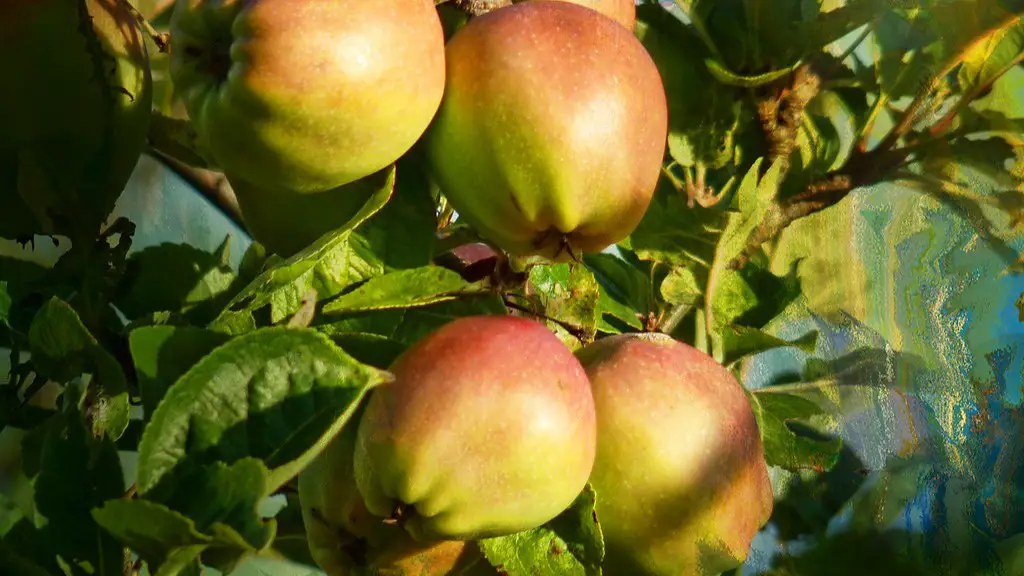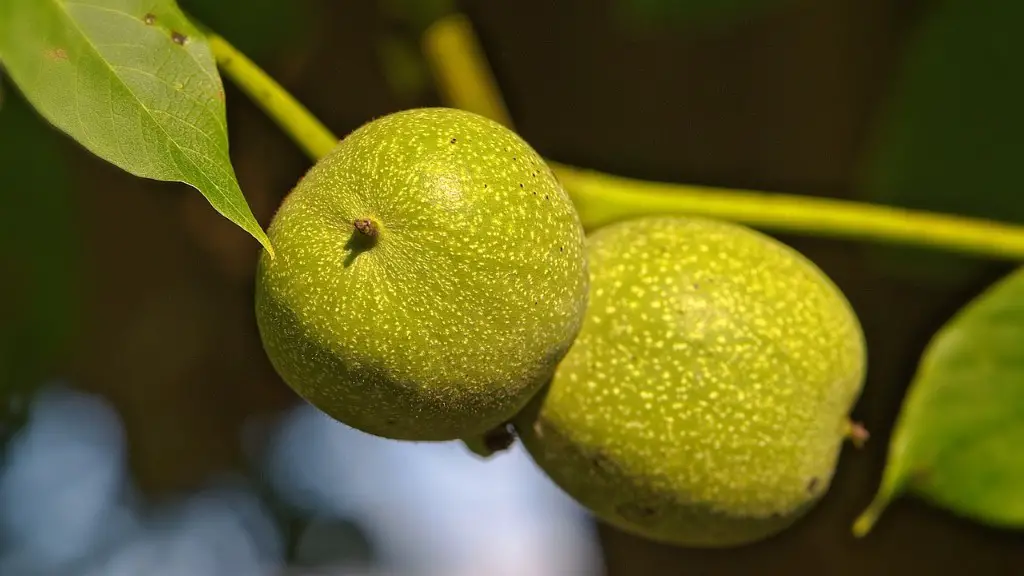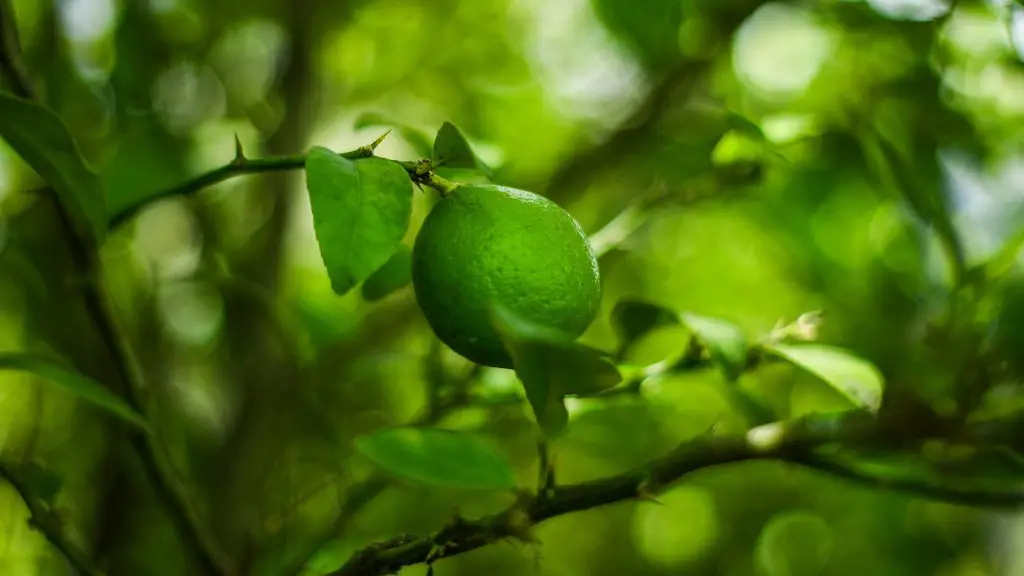Apple trees are a great addition to your yard and they can bear delicious fruit. Pruning your apple tree correctly can help maximize the amount of fruit it produces and the quality of the fruit. Here is how to prune an apple tree to bear fruit.
Start by selecting the right season to prune. The best time to prune your apple tree is in late winter or early spring, as soon as possible before the buds of the tree start to open. This ensures that the wounds in the tree will be able to heal before the tree is being actively growing and thriving and is less likely to succumb to disease. Make sure you don’t prune in the middle of the summer heat as this can cause sunburnt and damaged branches.
Next, it’s time to actually start pruning. Make sure you use sharp and clean pruning shears and have a bucket of water handy to clean them after every cut. Pruning is best done by removing any dead and dying branches, as well as removing branches that cross each other and any branches that are rubbing against each other. This will help increase air flow through the tree as well as improve the shape of the tree. This will help the tree focus its energy on producing more fruit instead of spending all of its energy sustaining random branches.
You should also remove any branches that are growing down because these branches are generally weaker, as well as any weak branches that are growing up. These should be replaced with stronger, thicker branches that can handle the weight of potential fruit. The best method for doing this is to cut the branch just above the node, a small reinforced point of where the branch meets the main stem.
After cutting, it is important to seal the ends of the cuts to prevent disease and pests. This can be done with pruning seal or horticultural paint. Make sure the seal is safe to use around your fruit and that it can withstand the elements. This will help protect the tree and increase the chances of a bountiful harvest in the future.
Finally, add a layer of mulch around the tree. This will help keep weeds away and will also help to keep the roots of the tree cool during warmer times. This will also help retain moisture in the soil and add nutrients that the tree needs to bear more fruit.
Maintenance for fruitful apple trees
Apple trees need to be attended to in order to ensure that they continue to grow and be fruitful. This means taking steps to prune the tree and maintain it during the whole year. Regular inspection of the tree should take place to ensure it is not being attacked by pests or diseases, as well as removing any dead or dying branches. During the spring and summer months, it is important to watch for any light heading cuts or cankers on the branches, as these can impact the productivity of the tree if not caught early enough.
As the tree grows, it is important to start managing the branches in order to manage the tree’s growth and maximize productivity. Thin the canopy of the tree by removing the lowest branches and any branch clusters that are preventing light and air from entering the tree. This will still allow enough leaves to be on the tree while increasing its production capability. It is important to also keep the central leader of the tree pruned and trained to encourage vertical growth.
Make sure to inspect for any signs of diseases or pests. It is important to look for cracks, depressions, discoloration, and other signs of some type of issue. If there are any, remove infected parts immediately and consult with an expert on correct care. If a tree is not receiving the proper care and nutrients, it will struggle to produce a larger crop.
It is also important to water apple trees at least once a week. Make sure to irrigate the plants when there is not enough rain and make sure to water regularly to ensure the tree stays hydrated. This will keep the tree healthy and help it produce larger fruits.
Pruning Old Apple Trees
Pruning older apple trees can be a challenge, as there are many complexities involved with cutting a mature tree. It is important to prune the tree every year but it is also important to not cut too much. You should focus on removing any dead or weak branches and any damaged or unhealthy leaves. The main goal is to reduce the size of the tree and to encourage more vigorous growth in the spring.
It is also important to keep the shape and look of the tree in mind, allowing the stronger branches to stay, while decreasing the density of weaker ones. Make sure when cutting off a branch, to cut just above the node and use a sealant to ensure the wound is protected from pests and diseases. Make sure to remove any drooping branches and any crossing branches as these can impact the amount of sunlight and air that the tree receives.
Once you are finished pruning, it is important to inspect the tree for any issues or problems. Make sure to look for any signs of disease or pests and to inspect for cracks in the bark, discoloration, and swollen areas. If you find any of these, consult with a professional arborist as soon as possible in order to ensure the tree is able to bear fruit.
Finally, it is important to make sure the tree is getting proper nutrients and irrigation. If the tree is not getting enough water or essential nutrients, it will struggle to produce a good harvest of fruits. Make sure to apply fertilizer in the spring and mulch around the tree to retain moisture in the soil.
Fruiting and Pollination of Apple Trees
Apple trees require a mix of insect pollinators like bees as well as fungus-carrying honey bees for pollination. In order for apples to form, the plant needs to be pollinated twice, once for each variety. To ensure successful pollination, it is important to have a diverse selection of apple trees in your garden so that the bees have a wide range of plants to choose from.
It is also important to note that certain varieties of apple trees require two different plants to be planted in order to produce fruit. These are known as cross pollinating trees and require two of the same or compatible trees to be planted in close proximity in order to reach full capacity. Make sure to research the variety of apples you are planting before hand to ensure that it will actually produce fruit.
It is also important to make sure your apple trees are receiving adequate nutrition and water. Healthy trees are more likely to produce a healthy harvest of fruits during the harvesting season. Make sure to feed the trees every spring with a fertilizer and to water them on a regular basis to ensure they have enough moisture.
Finally, it is important to prune the trees in order to increase the quality and quantity of fruits produced. Make sure to focus on removing any dead and dying branches, as well as any weak or crowded branches. Remove any branches that are crossing, rubbing, or growing too close together and make sure to seal the cuts afterwards. This will help maximize the amount of light and air that enters the tree and allow it to focus its energy on producing more fruit instead of wasting energy on limbs it doesn’t need.
Pest and Disease Prevention
Apple trees can be susceptible to diseases and pests, which can decrease their productivity and reduce the size of the harvest. It is important to inspect the tree regularly in order to look for signs of a problem before it becomes too severe. Make sure to regularly check for discoloration, cankers, drooping limbs, and other signs that could indicate an issue. If the tree does have some sort of issue, make sure to remove any infected parts, consult with an expert, and use pesticide or fungicide if necessary.
It is also important to make sure the tree is receiving enough water, sunlight, and nutrients. If the tree does not have access to enough sunlight and air, this can have a negative impact on its health. Make sure to keep the tree properly pruned and thin the canopy every year to allow enough light and air to enter the tree. Additionally, it is important to water the tree regularly and make sure that it has access to adequate nutrients.
Finally, it is important to watch for pests like aphids, moths, and snakes. In order to keep these pests away, make sure to check for signs of infestation and to use traps, pesticides, and insecticides as necessary. You can also use other cultural controls like diatomaceous earth, natural predators, and neem oil in order to keep pests away from the tree and reduce their impact on the harvest.
Benefits of Pruning Apple Trees
Pruning apple trees can come with numerous benefits. Pruning can help improve the shape and look of the tree, which can help increase the market value of the apple harvest. The act of pruning can also help reduce the risk of fungal and bacterial diseases by removing any infected parts and by increasing the amount of air that flows through the tree.
Pruning can also help to increase the amount of light that enters the tree and help improve the quality of the fruit that is produced. Pruning can also help to promote and maintain strong, healthy growth. When done correctly, pruning can help to minimize the amount of time it takes for the apples to mature and can help to increase the size of the harvest.
Finally, pruning can help to improve the overall health of the tree. By removing any dead, dying, or weak branches, the tree will be able to put its energy into producing a better harvest. Pruning can also help to remove any excess growth and reduce the amount of work it takes to maintain the tree in the future.
Overall, pruning an apple tree can come with a variety of benefits for both the tree and the producer. By taking the time to prune an apple tree correctly, one can ensure the tree will continue to grow and be productive for years to come.



